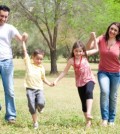Family Violence Notes

Social Stresses on Families
Stressor events
Hardships
How we respond to them – social learning
ABCX Model of Stress
(Image courtesy of imagerymajestic/FreeDigitalPhotos.net)
A (the event) interacts with B (the family’s crisis-meeting resources) which interacts with C (the meaning or definition the family makes of the event) to produce X (the crisis)
Losses of or gaining of persons, jobs, or incomes
STRESSOR EVENTS
Do they have resources and networks to help them cope with the problems?
WHAT IS DEFINED AS A CRISIS?
HOW ARE CRISES DEALT WITH?
Variations of the ABCX Model
Pile-up of demands
Family as and interdependent social system
Stress in one area spills over to stress in other areas
Violence in Families and Among Intimates
Intention of causing physical harm to legally related individuals or to those in close primary relationships
1:4 murder victims in the U.S. is killed by a member of his or her own family
Violence is not a part of all families (not in families emphasizing cooperation, commitment, sharing, and equality)
Myths of Family Violence
Causes of Family Violence
Intrafamily conflict
Male dominance in family and society
Cultural norms permitting family violence (parents or husbands)
Family socialization in violence
Pervasiveness of violence in society
Child Abuse and Violence
Hitting children for punishment is legal in most places
Illegal in Sweden and England
Corporal Punishment
Cultural spillover theory: violence in one sphere of life tends to engender violence in other spheres (Straus)
Linkage between physical punishment of children and crime in society
Conformity at first but deviance in the long run
Effects: juvenile offending, alcohol and abuse/dependence, mental health problems
Violence higher in poor families
Single parent families
Mothers – more contact
1/3 verbal aggression
Changes within the family have reduced child abuse: increased age at marriage, decreased number of unwanted children, economy, treatment programs, and legal sanctions
Child Sexual Abuse
National survey 27% women and 16% men reported being abused
Median age – under ten
Boys- strangers
Girls- family members
Male perpetrators
Nonbiologically related caretakers were overrepresented
Effects: sexual disturbance and dysfunction, homosexual experiences in adolescence or adulthood, depression, alcohol abuse, and suicidal ideas
Women: relationship with educational attainment and annual earnings
Prostitution
Sex at earlier ages, more partners, more likely to bear children before they turn 19, and more likely to experience sexually transmitted infections and forced sex
Parent Abuse and Violence
Violence against the parent – unreported
Violence to an animal
Wife and Female Partner Abuse and Violence
Cohabiting couples more likely
Common couple violence: conflict with occasional outburst of violence from either husbands or wives
Patriarchal terrorism: economic subordination, threats, isolation, and other control factors
Wife beating, battery, and battered women
Escalates
Culture
Abuse and Pregnancy
Low income and unemployment
Effects: depression, marital dissatisfaction, and relationship dissolution
Shelters and community resources
Rape among Intimates
Marital rape is not as recognized – in the past it wasn’t illegal
Rape: 1) sexual intercourse 2) force or threat of force 3) nonconsent of the victim
Male control and domination
Unreported
Why Do Abused Women and Wives Stay?
Learned helplessness (nothing can do to change situation)
Psychological entrapment
Investment model (costs and benefits)
Reasoned action and/or planned behavior
Husband and Male Partner Abuse and Violence
Less attention to the abused husband
1. less data
2. wife abuse is more serious
3. men do not report
4. not as visible – injuries
Research – comparable violence – mutual fighting
Mutual Abuse and Violence in Couples
More common
SUPERBOWL AND VIOLENCE
Witnessing Abuse – Children
Sibling Abuse and Violence
Frequently accepted
82% some form of violence
40% hit…
Explained – sibling rivalry or jealousy – resentment
Division of labor in the family – inequalities
Elderly Abuse and Violence
Passive vs. active neglect
Verbal and emotional to physical abuse
Caregiver overtaxed
Violence among Other Intimates
Dating and courtship violence
College students – 1/3 violence
Date Rape and Sexual Coercion
Treating and Preventing Family Violence
Police and crisis intervention centers
MINNEAPOLIS EXPERIMENT
About admin
Teaching Sociology is very enjoyable for me. Sociology is like a gateway to a plethora of knowledge and understanding. The subject material is directly applicable to real-world events and situations found in everyday life. The methods and concepts of sociology yield powerful insights into the social processes shaping the contemporary world. The ability to identify and understand these processes is valuable preparation for professional participation in an ever changing and complex society.Related Posts
Latest News
-
Sociology and the Pursuit of Social Justice: A Compelling Reason to Study It
Sociology is a fascinating field of study that delves into...
- Posted May 31, 2023
- 0
-
The Power of Sociology: Understanding the Importance of Social Structures
Sociology is the scientific study of society, social relationships, and...
- Posted May 31, 2023
- 0
-
FACT FINDING MISSIONS
Life is interleaved with contracts and agreements, the formal and...
- Posted August 10, 2018
- 0
-
The Many Churches of Enhancement
Throughout history religions formed around prophetic doctrines and absorbed people...
- Posted April 6, 2018
- 0
-
TAKE A SECOND TO CONSIDER THE SECOND
Remember that during the late 1700’s when the young US...
- Posted February 21, 2018
- 0
-
WHAT’S ON THE TABLE FOR IMMIGRATION
Deliberating in upcoming months will be a new proposal for...
- Posted February 12, 2018
- 0
-
Time-saving Tips from Your Instructor
Here are some helpful tips: Involve your family/friends. Let them...
- Posted October 19, 2016
- 0
-
Sociology and the Pursuit of Social Justice: A Compelling Reason to Study It
Sociology is a fascinating field of study that delves...
- May 31, 2023
- 0
-
The Power of Sociology: Understanding the Importance of Social Structures
Sociology is the scientific study of society, social relationships,...
- May 31, 2023
- 0
-
FACT FINDING MISSIONS
Life is interleaved with contracts and agreements, the formal...
- August 10, 2018
- 0
-
Successful Families
SUCCESSFUL FAMILIES Balancing Work and Family (dual-earner families) 1.Value...
- June 16, 2011
- 0
-
Sociology of Marriage
Types of “Good” Marriages: Romantic Marriage: passion and sex...
- June 16, 2011
- 0
Sociological Theory
-
Symbolic Interactionism
Symbolic interactionism focuses on how individuals communicate with one another, the basis...








